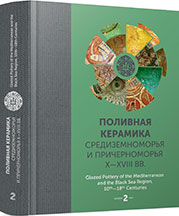
Byzantine and Turkish Glazed Pottery Finds from Aphrodisias
This study consists of initial observations made upon Byzantine, Seljuk, Begliks and Ottoman pottery finds from the Aphrodisias excavations since 2013. Chronology of the pottery finds uncovered in the North Avenue, South Agora, Hadrianic Baths, Theatre and Temple of Aphrodite will be presented briefly. To resolve the contexts in which the potteries belong to, the emphasis is on the history of the city and political events that could have potentially caused considerable changes to the economy. By establishing analogies and considering the chronology of the city, an attempt is made herein to put the pottery finds into their possible contexts.Through the end of the 9th century in Aphrodisias, a sudden rise in the quantity of Byzantine potteries is observed. The city was in commercially connected to Constantinople and centers such as the Adriatic Coasts or Corinth. Pieces of Fine Sgrafitto Ware, Green and Brown Painted Ware and Slip Painted Ware produced from the middle of the 12th century and the beginning of the 13th century have been found in many areas of the city. Very few pottery finds belonging to the Seljuk period have been uncovered. In Aphrodisias, glazed pottery production probably started during the Byzantine or Begliks period.There was a period of growth in Aphrodisias from the first quarter of 15th century to the mid 16th century. In excavated areas, a large number of pottery finds have been found. With the change of commercial routes in the 17th century, the city was increasingly reduced into a rural settlement and has subsisted to the present day.
More...